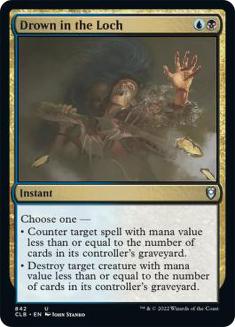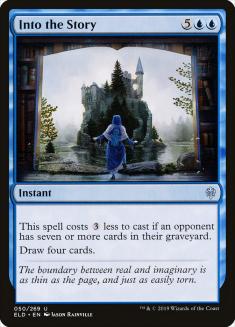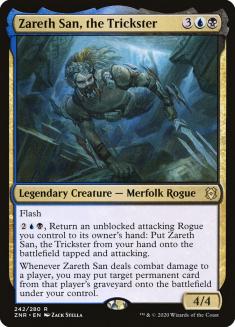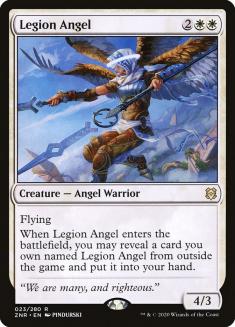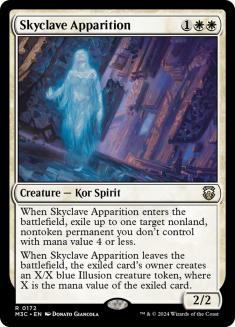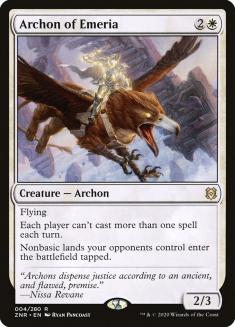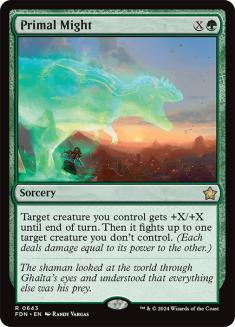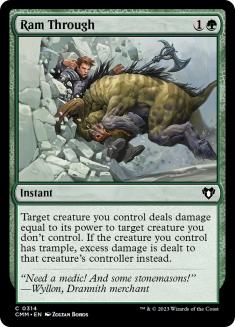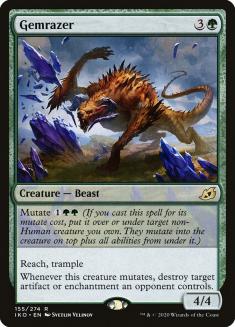There was legitimate concern after the banning of Uro, Titan of Nature’s Wrath that Zendikar Rising Standard was still in a bad spot. Despite the strength of Uro, too many of the power outliers were still distributed amongst ramp strategies and Omnath, Locus of Creation would still run the show.
The good news is that so far things look promising. A Red Bull Untapped Qualifier took place this weekend on MTGMelee, and as of the time of this writing, ChannelFireball has a tournament running deep into Round 13.
So what’s going on?
The two primary concerns were Four-Color Ramp and Temur Adventures adopting a fourth color to also play Omnath. The former failed to make the elimination rounds of the Red Bull Untapped Qualifier, while the latter did put two players into the Top 8. Further, the Top 16 also showed only modest results, with both decks only having one copy.
The Decks
Creatures (22)
- 4 Beanstalk Giant
- 1 Giant Killer
- 2 Edgewall Innkeeper
- 4 Bonecrusher Giant
- 4 Fae of Wishes
- 3 Brazen Borrower
- 4 Omnath, Locus of Creation
Lands (17)
Spells (21)

Creatures (16)
- 4 Lotus Cobra
- 4 Beanstalk Giant
- 2 Kenrith, the Returned King
- 2 Terror of the Peaks
- 4 Omnath, Locus of Creation
Lands (16)
Spells (28)
- 5 Forest
- 1 Plains
- 2 Mountain
- 4 Island
- 2 Cultivate
- 4 Mystical Dispute
- 4 Escape to the Wilds
- 4 Genesis Ultimatum
- 1 Spikefield Hazard
- 1 Thundering Rebuke
Sideboard

While there are some unconventional twists on these archetypes — Louis shaving down to two copies of Edgewall Innkeeper and Eliott leaning especially hard on the one-turn kill potential of Terror of the Peaks plus Beanstalk Giant, these archetypes are what we expected after the bannings. In the case of Adventures, Omnath can easily produce a surge of mana that makes leveraging Fae of Wishes or any of your other potential engines in Lucky Clover or Edgewall Innkeeper easier, in addition to being a must-kill threat against aggression.
Deciding exactly how to build Four-Color Ramp remains a question, but you generally want some way to outright kill your opponent when you “go off” and that can include any number of Ruin Crab; Terror of the Peaks; Felidar Retreat; or Kenrith, the Returned King. Regardless, the goal is to produce a ton of mana and chain Escape to the Wilds and Genesis Ultimatums.
Before we get to what this weekend has brought to the table, I think it’s important to touch on what Four-Color Ramp has lost with the removal of Uro, and that’s essentially its ability to always dictate the pace of the game.
Eliott’s decklist is leaning a bit high on interaction with four copies of Mystical Dispute in the maindeck, but don’t let that fool you as an indication that the deck is ever interested in passing the turn with open mana. Uro allowed players to elongate the game and choose when to jam their threats or pace them accordingly, knowing that Uro would allow them to pull ahead on card economy and snowball the game (particularly with the extra life buying them that time).
Now, Omnath is just a deck with the most powerful big spells. Things don’t really get better for them as the game continues, assuming they’re playing against a well-prepared opponent. Mystical Dispute is closer to a discard spell in functionality — to primarily protect your threats, rather than a way to answer your opponents.
Four-Color Ramp now has some pretty clear weaknesses despite its overall card quality and potential for explosive draws. There’s been a bit of hype surrounding Dimir Rogues as essentially being “unlocked” following the ban of Uro, but so far it’s been underperforming, with only a single copy in the Top 16 of the Red Bull Untapped Qualifier and seemingly absent from the top tables of CFB’s event.
Creatures (26)
- 2 Rankle, Master of Pranks
- 1 Vantress Gargoyle
- 3 Brazen Borrower
- 4 Thieves' Guild Enforcer
- 2 Ghostly Pilferer
- 3 Merfolk Windrobber
- 2 Zareth San, the Trickster
- 4 Nighthawk Scavenger
- 1 Blackbloom Rogue
- 4 Soaring Thought-Thief
Lands (14)
Spells (20)

There’s nothing wrong with Simon’s list, and there’s still a fair amount of iteration to go. While PVDDR is covering the subject in greater detail later this week, I do want to highlight some of my personal feelings.
Drown in the Loch and Into the Story are the reason to be milling your opponent. The former is a generically powerful card that covers many problems, while the latter is hyper-efficient and lets you play games about trading in a manner that we haven’t really seen in a long time.
The only real Rogue payoff that I’m interested in is Zareth San, the Trickster. Putting all this information together, this is how I’ve been toying with Rogues, which is really more of a midrange deck:
Creatures (17)
- 1 Vantress Gargoyle
- 2 Brazen Borrower
- 4 Thieves' Guild Enforcer
- 4 Ruin Crab
- 4 Zareth San, the Trickster
- 2 Nighthawk Scavenger
Lands (15)
Spells (28)

Essentially the mill components are just here to unlock your good cards. I’m not really interested in small-ball beatdown when Omnath is so easily capable of undoing your hard work. Interact and get ahead with your hammers like Into the Story and Zareth San.
Needless to say, I think there’s a lot of work to be done on this archetype.
Despite the hype for Dimir, I think it’s fair to say that another deck is what came out of left field to both claim the Red Bull title and is currently sitting pretty near the top of the standings of the CFB Clash.
Creatures (22)
- 2 Rankle, Master of Pranks
- 2 Murderous Rider
- 4 Bonecrusher Giant
- 4 Mire Triton
- 4 Kroxa, Titan of Death's Hunger
- 2 Terror of the Peaks
- 4 Magmatic Channeler
Planeswalkers (1)
Lands (15)
Spells (22)

I love this deck. It has synergies without substantial sacrifices in card quality and makes real use of modal double-faced cards (DFCs) that are particularly powerful in the Rakdos colors. It’s hard for this deck to mana flood or be mana screwed, it has a lot of strong individual threats, and Kroxa remains in the format as one of the best inevitability options if you can cast it.
Speaking of, Grixis Control has also been on the rise, as popularized by Crokeyz.
Creatures (6)
Planeswalkers (1)
Lands (20)
Spells (32)

Control in general has also been unlocked to some extent by the removal of Uro from the format. Previously, the only version of a control slanted deck was Sultai for Uro itself, but Dimir, Grixis, and even Azorius and Bant are slowly starting to crop up.
This weekend wasn’t the most impressive weekend for control, but it did scatter throughout the Top 32 of the Red Bull event, which is actually quite promising. Building proper control decks in Week 1 of a format is notoriously difficult, but it’s pretty clear that hyper-interactive decks have become far more viable with Uro’s banning.
Of course, beating down gets a lot easier if your opponent isn’t gaining an additional three-plus life per game, and a deck we haven’t seen in a long time got second place:
Creatures (28)
- 4 Venerable Knight
- 3 Giant Killer
- 2 Shepherd of the Flock
- 4 Seasoned Hallowblade
- 3 Selfless Savior
- 2 Legion Angel
- 4 Skyclave Apparition
- 2 Archon of Emeria
- 4 Luminarch Aspirant
Lands (3)
Spells (29)

In some ways this is actually quite different from a traditional Mono-White Aggro deck. There are some elements of play-all-my-cards-and-attack-you-before-you-get-off-the-ground, but this deck is both putting a lot of emphasis on interacting as well as the ability to play deeper games with mana sinks.
The manabase is only the tip of the iceberg, with Castle Ardenvale and Emeria’s Call doing fine work, but Maul of the Skyclaves is the big standout in my eyes. It’s a fine pseudo-Aura on-curve that pairs extremely well with Seasoned Hallowblade, but it can also turn all of your creatures into real threats going late, which is further enhanced by Santosvella’s Adventure creatures and Legion Angels as continued sources of threats.
Skyclave Apparition and Archon of Emeria help to round out this deck’s ability to interact. The former is a great answer to Lucky Clover, while the latter can make opponents stumble and is particularly effective against Omnath’s ability to produce an insurmountable amount of game actions with all of the mana it produces.
While this deck is a good step slower than most traditional Mono-White Aggro decks, it has a wide variety of ways to approach games. The other aggressive deck that’s been performing consistently is Mono-Green Aggro:
Creatures (30)
- 4 Lotus Cobra
- 4 Scavenging Ooze
- 4 Lovestruck Beast
- 4 Stonecoil Serpent
- 2 Yorvo, Lord of Garenbrig
- 4 Gemrazer
- 4 Swarm Shambler
- 4 Oran-Rief Ooze
Lands (2)
Spells (28)
Sideboard

Creatures (28)
- 4 Scavenging Ooze
- 4 Lovestruck Beast
- 4 Stonecoil Serpent
- 2 Yorvo, Lord of Garenbrig
- 2 Syr Faren, the Hengehammer
- 4 Gemrazer
- 4 Swarm Shambler
- 4 Kazandu Mammoth
Lands (2)
Spells (30)

You’ll notice a consistent emphasis on two things: these lists have a high number of fight cards to kill Lotus Cobra and Omnath and max out on Gemrazer to answer Lucky Clover.
Just like Mono-White Aggro, Mono-Green Aggro has a high number of interactive cards and honestly that’s a really healthy sign for the format. That ability to keep Omnath and Adventures on their toes in addition to honest aggression is a strong combination that’s all supplemented nicely by the DFCs that give these decks a better balance between lands and spells than usual.
Finally, my pick for the most underappreciated deck in the format:
Creatures (16)
Lands (12)
Spells (32)

Cycling is fast and consistent and is excellent at punishing the unprepared. Julien’s list is fairly traditional, but I take issue with the lack of DFCs. In particular, I think Boros Cycling is one of the greatest beneficiaries from Zendikar Rising’s DFCs. Spikefield Hazard and Valakut Awakening are huge boons to this strategy, as the former has already proven its power and Valakut Awakening is the perfect card to complement a deck that can both traditionally flood and is trying to find a key card. Not to mention, this deck wants to hit its first four land drops despite having such a low land count. Getting choked on the ability to cycle away your cards is nearly as detrimental as flooding out in cycling!
What Should You Play?
So is Four-Color Ramp still the best deck in Zendikar Rising Standard?
Probably, but this weekend has been a bright moment for Zendikar Rising Standard. Not only are folks tuning and iterating on older decks, but they’re showing up and winning with brand-new ones. That’s exactly what we want out of a rotation and the consistent movement towards more decks picking up additional removal spells and versatile means of interaction is an excellent sign that Uro’s banning has done good work towards getting Standard into a healthy spot.



